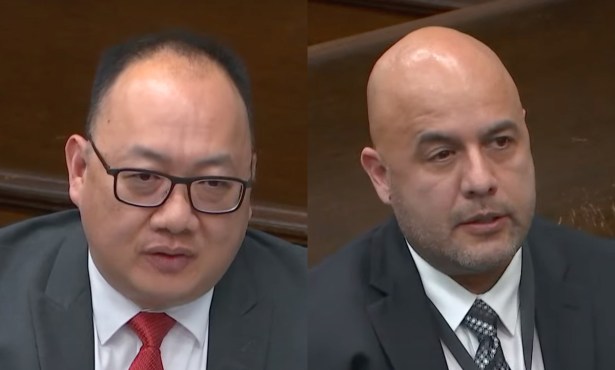HOPE Housing Fund Misses Mark, Sent Back to Drawing Board Again
Housing Advocates Urge City to Use Funds to Tackle Severe Crisis for Low-Income Residents First

When Santa Barbara City Council established the Housing Opportunities, Preservation, and Equity (HOPE) Fund in 2022, the idea was that the city would use a surplus of $3 million for a dedicated source of funding toward affordable housing and housing-related programs. Of that money, $2.8 million would go straight to either building or helping people obtain affordable housing, and another $250,000 would go toward a “right to counsel” program to help residents fight evictions in court.
But when the city staff presented a proposed plan for using the funds this March, councilmembers and housing organizations’ representatives said that it was unnecessarily complicated and did not meet the needs of city residents. Some asked why the funds were being made available for the upper-middle class — residents making up to 200 percent of the Area Median Income (AMI for Santa Barbara is $100,100).
Mayor Randy Rowse suggested that the issue was “too complex,” and that it be kicked back to the Ordinance Committee for a deeper dive.
On Tuesday, the issue came back across the Ordinance Committee, where once again the version presented by city staff led to more questions than answers.
During that March meeting, there was overwhelming support for a requirement that any units built using the HOPE Fund include an “affordability covenant” that ensured availability for low-income renters for 90 years. But the staff’s version had a tiered system that would allow property owners to place units back at market rate as early as 10 years.
Councilmember Mike Jordan said he was confused as to why it had been lowered from the 90-year affordability — especially since the 90-year figure was supported by the Housing Authority and was considered the “industry standard” for affordability covenants.
Councilmember Kristen Sneddon, who serves as chair of the Ordinance Committee, asked why residents who make up to 200 percent AMI were included. Those most vulnerable, she said, were the lowest -income families, for whom the city has failed to provide adequate housing. She pointed out that the city had built more than 98 percent of its quota for above-moderate housing from 2015-2023, while only meeting 2 percent of its goal in moderate, 16 percent in low-income, and 12 percent in very-low-income housing units — “which I consider failing,” Sneddon said.
Rob Fredericks, executive director and CEO of the city Housing Authority, also urged that the HOPE Fund be used for low-income housing as a top priority. He suggested the city model the program after already established guidelines in affordable housing.
“Council gave clear direction as to having the vast majority of these funds going toward investing in permanent affordable housing,” Fredericks said. “We at the Housing Authority posit that it is the lowest-income households that are the most burdened due to the high cost of housing.”
Community Development Director Eli Isaacson said, “If the direction from council is, ‘No, we really think there are members of our community that are extremely rent-burdened, extremely vulnerable, and that’s where we need to focus our energies and our resources into — addressing the needs of those individuals,’ then we can obviously take that direction.”
Isaacson said the direction on Tuesday was “very clear,” and he promised to return for a workshop that is “much better aligned to the expectations.”
The HOPE Fund will return to the Ordinance Committee for a deeper discussion, with the intention of shaping a fund that will consider the suggestions made by letters sent by the Housing Authority and League of Women Voters Santa Barbara.



